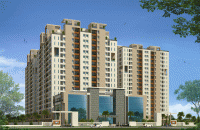Mr. Ramesh
Nair, Jones Lang LaSalle
Over the
past five years, Greater Mumbai has seen a significant fall in the average
sizes of residential flats in the investible-grade category. Thane & Navi Mumbai, which along with Mumbai form the
Mumbai Metropolitan Region (MMR), too witnessed a fall in apartment sizes,
although to a limited extent.
With
Delhi-NCR too exhibiting the same trend, this appears to be a phenomenon of the
larger metro cities. Other cities like Bangalore, Chennai, Pune, Hyderabad
& Kolkata have, in fact seen a
varying rise in median flat sizes. The dynamics of apartment sizes has a tale
to tell - a tale about affordability and development of the residential sector
across cities.
In 2008,
apartment sizes in Greater Mumbai were, on average, 20 % larger than those
observed on a pan-India level. The median size of apartments across India at
that time was close to 1,600 square feet. While this number continues to remain
more or / less the same in most other
cities, unit sizes in Mumbai have drastically reduced and are currently 15 %
lower than the national median size.
This is a
fall of about 31 % from 2008. NCR in the same time frame saw a drop of 14 % in
apartment sizes while Pune saw an increase in apartment sizes by 23 %. Thane
and Navi Mumbai witnessed apartment size reduction of 17 % and 18 %
respectively.
The fall
in flats sizes in Thane & Navi
Mumbai has been less severe as compared to the trend seen in the Mumbai
residential real estate market. It would be reasonable to assume that the
rising levels of affluence in the city would yield a preference for larger
apartment sizes.
Why has that not been the case?
While a major part of the fall seems gradual, a
closer look at some sharp variations during the last 4 to 5 years could
possibly help understand this trend better.
The
average unit size of investible-grade apartments in Mumbai, Navi Mumbai and
Thane witnessed a sharp fall in 2009. Many would argue that this was the
after-effect of recession that hit the world - and India - in mid-2008.
However, it is pertinent to note that typically, construction of
investible-grade apartments takes a minimum of three years before completion.
This
means that developers would have been required to anticipate the unfolding of a
recessionary period at least by 2006 to have started constructing smaller-sized
apartment projects that would see completion in 2009. This seems highly
unlikely.
Could it
have had nothing to do with recession at all?
Certainly,
the prediction of a recession with enough accuracy to warrant radically altered
investment and construction plans is not a plausible explanation.
Rather,
the decision to launch projects with smaller-sized units could be a result of
the meteoric rise in apartment prices during previous years.
As per
JLL Real Estate Intelligence Services data, the period of 2005-07 saw an
astronomic rise of 110 % in residential property prices across the MMR.
In
Greater Mumbai alone, the figure was close to 120 % on a simple average growth
basis.
With
Mumbai already being the costliest city in India, such steep escalations in
capital values definitely challenged affordability. At the same time, the more
reasonable prices in Thane and Navi Mumbai did not present such hurdle to
saleability.
It
appears that developers perceived the need to reduce apartment sizes in order
to maintain a comfortable level of affordability.
Contrary
to popular opinions on the issue, it emerges that developers have indeed had
concerns about the sustained affordability of residential real estate in and
around Mumbai. One must not forget that developers receive real-time feedback
from property buyers, and are therefore quite informed about matters like affordability
and preferences.
While
property prices are not purely a product of developers’ discretion, the
decision to alter apartment sizes as per the needs and spending power of buyers
is definitely within their ambit. It will be interesting to see what the lowest
possible limit to this fall in apartment sizes is before it entirely breaches
preferences of home buyers in Mumbai.
About the
article
Mr.
Ramesh Nair, COO - Business, India, Jones Lang LaSalle
For Media contact
Arun
Chitnis
Head –
Corporate Communications & Media Relations
Jones
Lang LaSalle India
Level 6,
Amar Avinash Corporate Plaza
Bund
Garden Road,
Pune
411001.
Tel:
(020) 30930441 Fax: (020) 40196101
Mob: +91
9657129999
Website:
www.joneslanglasalle.co.in
Blog:
www.joneslanglasalleblog.com/realestatecompass




























